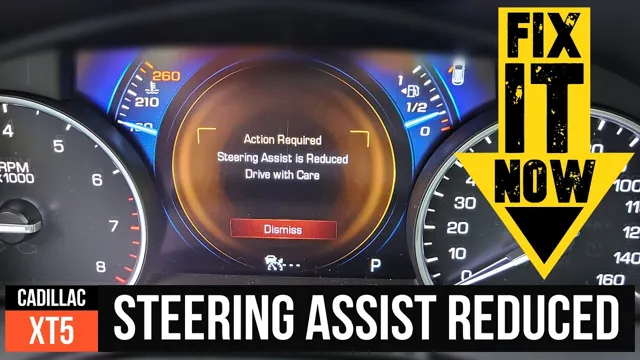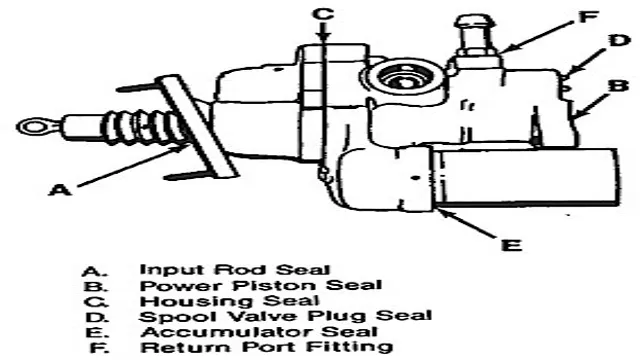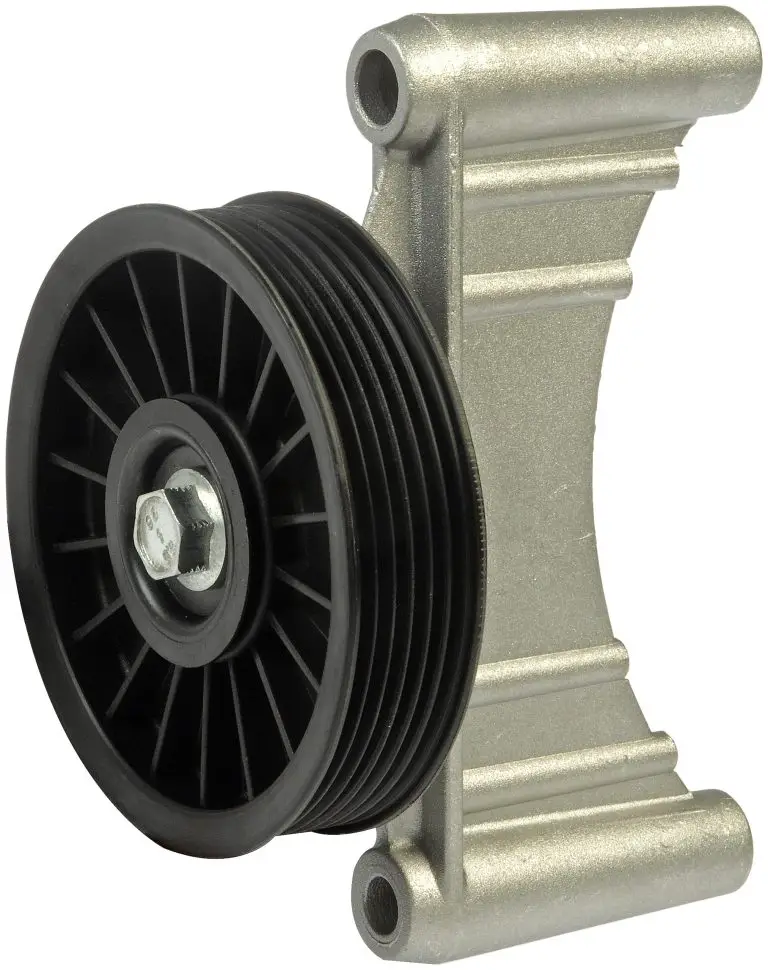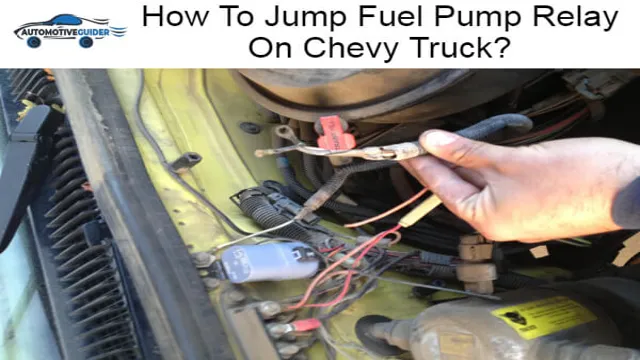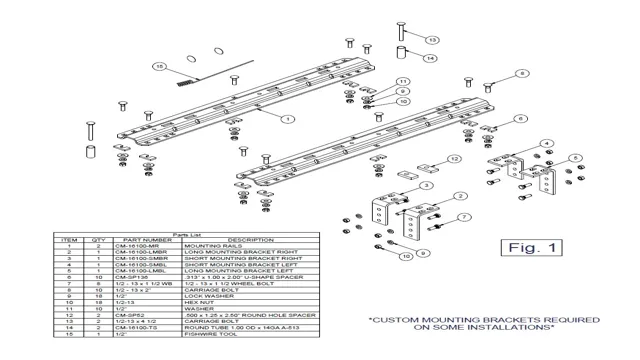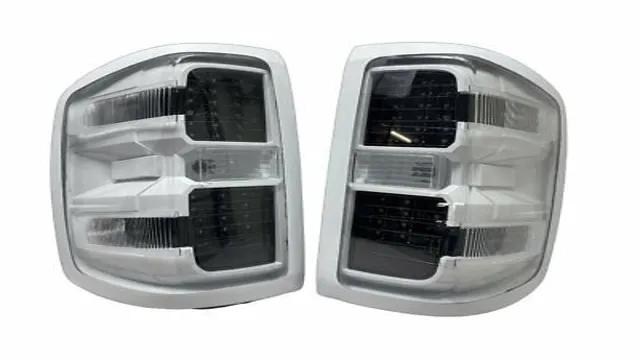Drive with Confidence: The Ultimate Guide to Fixing Reduced Steering Assist
Picture this – you’re driving down the highway, and your steering wheel suddenly becomes harder to turn. Your car’s reduced steering assist sends alarm bells ringing in your head. What could be causing this issue, and what can you do to fix it? In this blog post, we dive into the ins and outs of reduced steering assist and provide you with some tips to help you drive with care.
We’ll cover everything from the causes of this issue to some practical solutions that you can implement today. So, buckle up and get ready to learn how to keep your steering smooth and your driving safe!
Common Causes of Reduced Steering Assist
If you’ve ever experienced reduced steering assist while driving, you know how important it is to be cautious on the road. There are a few common causes of reduced steering assist that you can check for before seeking professional help. One possible cause is a low power steering fluid level, which can happen when there’s a leak in the system.
Another possible cause is a malfunctioning power steering pump, which may need to be replaced. It’s also possible that the power steering belt is worn or loose, which can cause reduced assist. Finally, it could be a problem with the steering rack or gearbox, which may require more extensive repairs.
Whatever the cause, it’s important to get the issue resolved as soon as possible to maintain proper control of your vehicle. So if you notice reduced steering assist while driving, be sure to get it checked out and drive with extra care until the issue is resolved.
– Low Power Steering Fluid
Low Power Steering Fluid One of the most common causes of reduced steering assist is low power steering fluid. This is a problem that can occur over time, or it can happen suddenly if there is a leak in the system. When the power steering pump doesn’t have enough fluid to work with, it won’t be able to assist the driver in turning the wheels as easily as it should.
This can lead to difficulty steering, especially at low speeds or when trying to park. It’s important to check your power steering fluid regularly and top it off if necessary to ensure that your power steering system is working properly. If you suspect a leak, it’s important to have it checked out by a professional mechanic as soon as possible to avoid further damage to your car’s steering system.
Always remember to use the recommended type of power steering fluid for your vehicle to ensure the best performance.
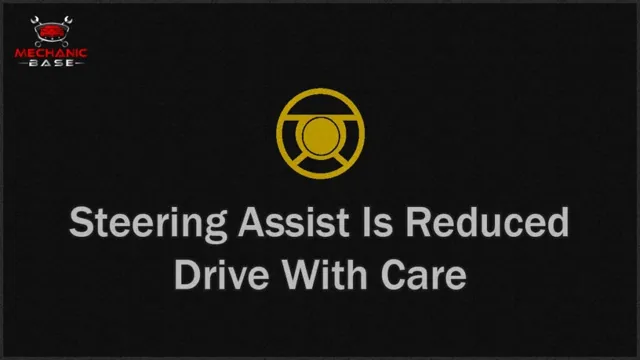
– Malfunctioning Power Steering Pump
If you’re experiencing reduced steering assist while driving, there could be several reasons why. One common cause is a malfunctioning power steering pump. The power steering pump is responsible for providing the hydraulic pressure necessary to turn the wheels with ease.
If the pump fails or becomes damaged, it can cause reduced steering assist, making it harder to turn the wheels. This can be dangerous, especially when you need to make quick maneuvers on the road. Other causes of reduced steering assist could include low power steering fluid levels, a damaged steering gear or a faulty steering control module.
It’s important to have your vehicle inspected by a professional mechanic to determine the exact cause of the problem and have it repaired promptly. Neglecting steering issues can lead to more serious problems down the road.
– Faulty Steering Rack or Column
Reduced Steering Assist One of the common causes of reduced steering assist is a faulty steering rack or column. A steering rack might malfunction if there is an issue with its fluid level, leaks, or worn-out components. These problems can make it hard to turn the wheels, and the vehicle will also exhibit some noise or vibration.
On the other hand, the column, which connects the steering wheel to the rack, can become faulty due to wear and tear or damage from accidents. This can also lead to reduced steering support, making it challenging to navigate the vehicle. It is essential to get regular maintenance checks to avoid these issues to ensure your safety and the longevity of your car.
If you notice any unusual symptoms, it’s crucial to have a mechanic diagnose the problem as soon as possible to prevent any worsening of the steering system.
Troubleshooting Reduced Steering Assist
If you’re experiencing reduced steering assist while driving, it’s important to address the issue as soon as possible to avoid potential safety hazards. One possible cause of this problem could be a malfunctioning power steering pump, which may require a replacement or repair. Another potential issue could be low power steering fluid levels, which can be topped off to restore proper steering assist.
It’s important to drive with caution and avoid sharp turns or sudden movements until the issue is resolved. If you’re unsure of the cause or how to fix it, it’s best to take your vehicle to a trusted mechanic who can diagnose and repair any problems with your steering system. Remember to always prioritize your safety on the road.
– Check Power Steering Fluid Level
If you’re experiencing reduced steering assist, one potential troubleshooting step is to check your power steering fluid level. Your power steering system relies on fluid to function properly and if the fluid level is low, you may experience a decrease in steering assistance. To check your power steering fluid level, locate the power steering fluid reservoir under the hood of your car and consult your vehicle’s owner manual for instructions on how to properly check the fluid level.
If the fluid level is low, add more fluid and check for leaks in the system. Remember, neglecting routine maintenance on your power steering system can lead to more significant issues down the road. Don’t wait until it’s too late; ensure your power steering system is functioning properly by checking the fluid level and performing regular maintenance.
– Inspect Power Steering Pump and Belt
If you’re experiencing reduced steering assistance in your vehicle, one of the first things to check is the power steering pump and belt. These components are vital to the operation of your power steering system and can cause problems if they’re worn out or damaged. To inspect the power steering pump, start by checking the fluid level and quality.
If the fluid is low or dirty, it may be time for a flush or replacement. Next, visually examine the belt for signs of wear or damage, such as cracks, fraying, or glazing. If the belt is worn, it may need to be replaced.
Keep in mind that a faulty power steering pump or belt can cause other issues, such as a squealing noise or difficulty turning the wheel. If you suspect a problem, it’s best to bring your vehicle to a trusted mechanic for a professional diagnosis and repair.
– Examine Steering Rack and Column
When you experience reduced steering assist, it is important to examine the steering rack and column. The steering rack is responsible for converting the rotation of the steering wheel into the lateral movement of the wheels. The column is the component that connects the steering wheel to the rack, allowing for control over the direction of the wheels.
If there is an issue with either of these components, it can result in reduced steering assist, making it difficult to turn the vehicle. Common issues include worn bushings, damaged gears, and leaks in the power steering fluid. If you notice any of these symptoms, it is important to have a professional conduct a thorough inspection and make any necessary repairs.
By addressing these issues, you can ensure that your vehicle is safe to drive and operating at peak performance.
Temporary Fix: Drive with Care
If you’re experiencing reduced steering assist, then driving with care is your best temporary fix. Reduced steering assist occurs when your vehicle’s power steering system is failing. When you turn your steering wheel, you’ll notice that it’s a lot harder to maneuver your vehicle than usual.
The problem could be caused by a low level of power steering fluid, a faulty power steering pump, or a damaged power steering belt. This issue not only affects your driving safety but also can damage other vital components in your car if not addressed promptly. Therefore, driving with care is crucial.
Reduce your speed and give yourself a greater distance to stop or react to anything unexpected. Concentrate on every turn you make, and use both hands firmly on the steering wheel. Although this is a temporary fix, it’s important to get your vehicle fixed as soon as possible to avoid further damage to your vehicle’s steering system.
– Steer Slowly and Carefully
When you find yourself with a tire that needs fixing, the best temporary solution is to drive slowly and carefully until you can get it properly fixed or replaced. It may be tempting to continue driving normally, but a damaged tire can cause further damage to your vehicle or even pose a safety risk. By driving slowly and cautiously, you can avoid sudden movements and reduce the risk of causing further damage to the tire.
Remember to stick to the speed limit and avoid sudden turns or stops. It’s also important to avoid driving on rough or uneven terrain, as this can put additional strain on the tire. Always keep in mind that the temporary fix is just that, temporary, and plan to get the tire fixed or replaced as soon as possible to avoid further complications.
– Avoid Abrupt Turns
When driving, it’s important to keep your movements as smooth and steady as possible. Abrupt turns can spell disaster, particularly if you’re going too fast or driving on a slippery surface. One simple way to avoid any mishaps is to simply drive with care.
This means taking your time and being more mindful of the road conditions and any potential hazards, like other drivers or pedestrians. While this may seem like a temporary fix, it can actually be a very effective way to keep yourself and others safe on the road. So if you’re ever feeling unsure or uneasy about your driving, just remember to slow down and take it easy.
A little caution can go a long way.
When to Seek Professional Help
Your car’s steering assist is responsible for reducing the effort required to turn the steering wheel. However, if you notice that the steering assist is reduced and the car is asking you to “drive with care,” it’s essential to take action immediately. This issue could indicate a problem with the power steering system, which could make driving unsafe or result in more significant damage to your vehicle.
In such cases, seeking professional help is crucial. Experienced mechanics can diagnose the issue and help repair the power steering system. Note that ignoring this issue could lead to total power steering failure, rendering your vehicle undriveable.
Therefore, it’s always best to address any problems with the steering assist system as soon as possible by seeking professional help.
Conclusion
In conclusion, if you’re experiencing reduced steering assist, the best approach is to drive with care. Similar to navigating through life’s obstacles, taking things slow and being mindful of potential hazards can prevent further damage or harm. If the issue persists, it’s essential to seek professional assistance to get back on track smoothly.
Remember, taking care of your vehicle is not only beneficial for your safety but also for the longevity of your trusty companion on the road.”
FAQs
What is steering assist reduced drive with care warning?
This warning message indicates that there is an issue with the power steering system, and the steering assist has been reduced, requiring the driver to operate the vehicle with extra caution.
What are the common causes of steering assist reduced drive with care warning?
The warning can be caused by a malfunctioning power steering pump, low power steering fluid, damaged power steering rack, or faulty sensors.
Can I still drive my vehicle if the steering assist is reduced?
Yes, you can still drive the car, but you need to be extra careful because the steering wheel may feel heavy, and it may require more effort to steer the vehicle.
What should I do if I see the warning message displayed on my dashboard?
You should immediately check the power steering fluid level and verify that there are no leaks in the power steering system. If this does not resolve the issue, it is recommended to take your car to a qualified mechanic for further inspection and repair.

